
Browse an alphabetical list of photographs. These historical images portray people, places, and events before, during, and after World War II and the Holocaust.
<< Previous | Displaying results 2576-2600 of 2641 for "Photo" | Next >>
Commercial area on Nalewki Street in Warsaw's Jewish quarter. Warsaw, Poland, 1938.
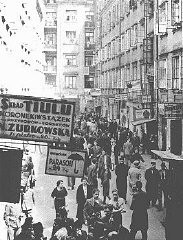
A wartime photograph of Magdalene Garber in the 1940s, likely taken in Berlin, Germany. Magdalene (“Leni”) Garber was born to Joseph Garber, a Togolese man, and Johanna Maychrzak in January 1919 in Germany. Magdalene grew up in Berlin-Neukölln and worked as a performer from an early age. She was part of several ethnographic shows, including a variety of Mohamed ben Ahmed’s Afrika-Schau during the late 1920s through the early 1930s, and the German Africa Show (Deutsche Afrika-Schau) during the Nazi…
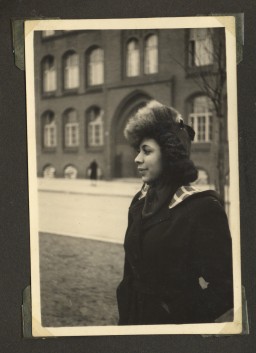
View of a watchtower and prisoner barracks at the Ohrdruf subcamp of the Buchenwald concentration camp, soon after US forces liberated Ohrdruf. Ohrdruf, Germany, April 1945.
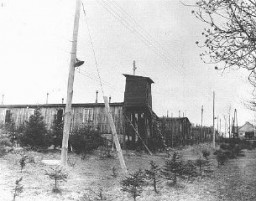
A view of one of the watchtowers and part of the perimeter fence at Ohrdruf, part of the Buchenwald camp system, seen here after US forces liberated the camp. Ohrdruf, Germany, April 1945.
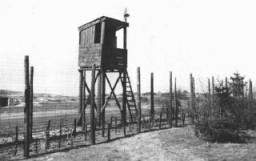
Ustasa (Croatian fascist) guard next to a watchtower at the Jasenovac concentration camp. Yugoslavia, between 1941 and 1944.
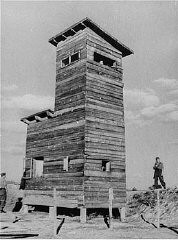
A British guard in a watchtower at Poppendorf displaced persons camp, after the arrival of Jewish refugees forced from the "Exodus 1947" refugee ship. Photograph taken by Henry Ries. Germany, September 1947.

Teenager Simon Jeruchim learned of the Allied invasion of German-occupied France (D-Day) on a shortwave radio. He painted a watercolor depiction of the bombing and burning of a town situated on a river. He titled the piece "Memory of June 6, 1944." Simon Jeruchim was born in Paris in 1929 to Samuel and Sonia (née Szpiro), Jewish émigrés from Poland. In July 1942, Simon’s parents were able to find hiding places for him and his siblings, but they were arrested and deported to Auschwitz before they…
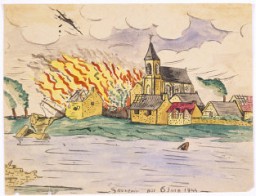
An elderly German Jewish woman wearing the compulsory Jewish badge. Berlin, Germany, September 27, 1941.
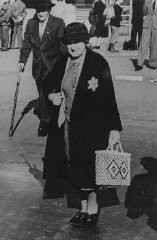
Blanka and Harry celebrate their wedding anniversary in a New York café. At the time, Blanka was expecting their first child.
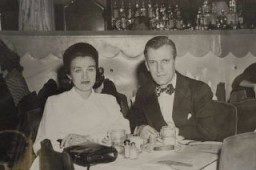
Family and friends are gathered for a Jewish wedding celebration in Kovno. Among those pictured are Jona and Gita Wisgardisky (standing at the back on the right). In the summer of 1941 soon after the German occupation of Lithuania, the Wisgardisky family was forced into the Kovno ghetto. During a roundup of children in the ghetto in 1942, Henia (Gita and Jona's daughter) was hidden in a secret room that her father built in a pantry in their apartment. Later she was smuggled out of the ghetto and…
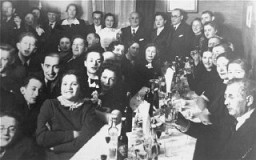
Photograph taken during the wedding of Ibby Neuman and Max Mandel at the Bad Reichenhall displaced persons' camp. Germany, February 22, 1948.
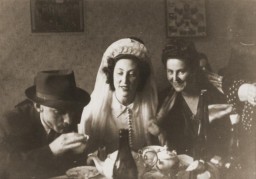
Wedding of Blanka Rothschild's daughter, Shelly, in 1974. The wedding took place at a temple in New York.
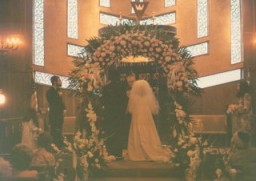
This wedding photo of Blanka and her husband Harry appeared in an Oregon newspaper. Blanka has no other photo of their wedding. "The war taught me that things are not important," she says.
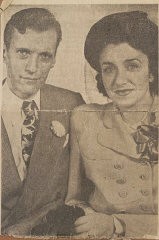
Bride and groom Laura Uziel and Saul Amarillo (center) pose with their extended families during their wedding. Salonika, Greece, 1938.
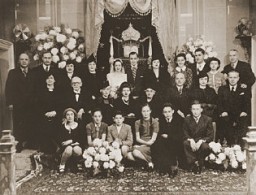
Wedding portrait of former Bielski partisan, Berl Kagan. Emden, Germany, April 3, 1948. Pictured from left to right are Ita Rubin (the bride), her mother, Sarah Rubin, and Berl Kagan. All three were passengers on the Exodus 1947.
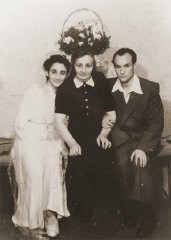
Portrait of Hilde and Gerrit Verdoner, with four bridesmaids, on their wedding day. The bridesmaids are: Jetty Fontijn (far left), Letty Stibbe (second from right), Miepje Slulizer (right), and Fanny Schoenfeld (standing, back). Amsterdam, the Netherlands, December 12, 1933.
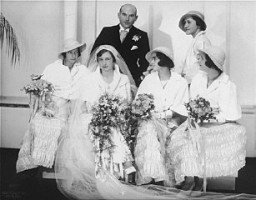
Wedding photo of Regina and Victor. New York City, March 8, 1953.
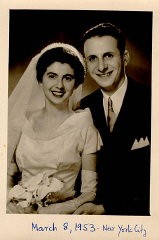
Wedding rings taken from prisoners. The rings were found near the Buchenwald concentration camp following liberation by US Army soldiers. Germany, May 1945.
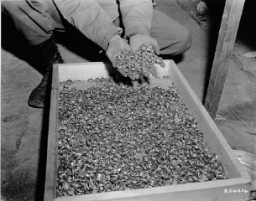
Police search members of the SA (Sturmabteilung) for weapons as they gather for a rally. This photo was taken during the years of the Weimar Republic, before the Nazi rise to power. Germany, 1929–1932.
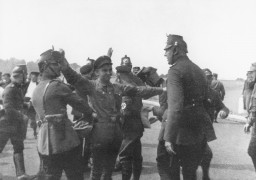
Until July 1942, Westerbork was a refugee camp for Jews who had moved illegally to the Netherlands. After the German conquest of the Netherlands, Westerbork was expanded into a transit camp for Jews deported from the Netherlands to killing centers.
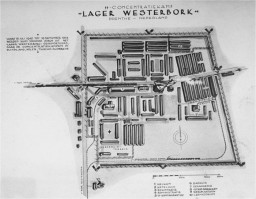
Alexander Schmorell, a member of the White Rose student opposition, upon his graduation from high school. Schmorell was arrested, condemned to death by the People's Court, and executed on July 13, 1943.
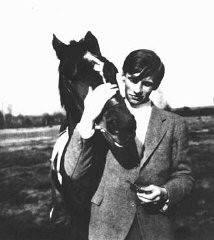
Wilhelm Keitel, head of the German Armed Forces High Command, who signed orders authorizing the shooting of Soviet prisoners of war. Germany, 1942.
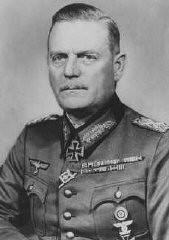
William Bein, director of the American Jewish Joint Distribution Committee (JDC) in Poland, with children at the Srodborow home for Jewish children, near Warsaw. The home was financed by the JDC. Srodborow, Poland, 1946.
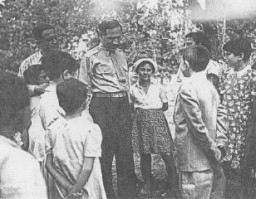
Winston Churchill (seated) at Westminster College on March 5, 1946, the day he delivered his “Iron Curtain” speech. Standing at the far right is US President Harry S. Truman. Behind them (left to right) are Admiral William D. Leahy, Captain Clark Clifford, and Major General Harry Vaughan. Photograph taken by Terry Savage. Fulton, Missouri.
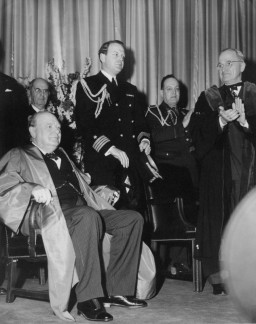
Walter Gumpert testifies for the prosecution during the Krupp Trial. Gumpert worked as a machinist at a Krupp factory. December 16, 1947.
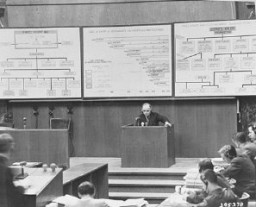
We would like to thank Crown Family Philanthropies, Abe and Ida Cooper Foundation, the Claims Conference, EVZ, and BMF for supporting the ongoing work to create content and resources for the Holocaust Encyclopedia. View the list of donor acknowledgement.